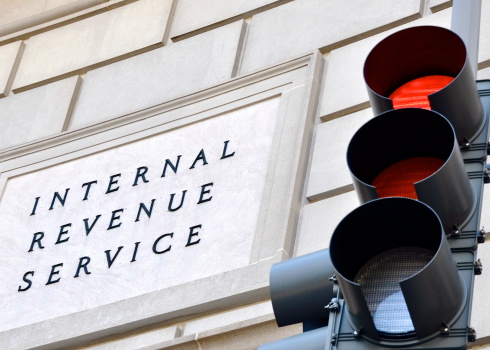
by admin | Sep 7, 2021 | Hot Topics, Human Resources, IRS
Employers, have you reminded your employees to check that they are having the right amount of tax withheld from their paychecks? It’s a good idea for everyone to check their payroll withholding every year, but it is particularly important this year due to the many proposed tax changes.
The law’s changes do not affect every taxpayer the same way. Some workers may need to increase their withholding so they will not face a tax bill —and possible penalties — next April when their 2021 tax return is due. Many other workers, however, benefit from the law’s changes and can take home more pay because the withholding amounts are less.
Help your employees avoid being surprised next spring when they prepare their 2021 returns. Remind them now to check their year-to-date withholding so they can make adjustments, if appropriate, on their paychecks for the rest of this year. It’s easy and convenient using tools provided by the IRS.
Here is a sample message to employees:
The IRS encourages everyone to use the Withholding Calculator to perform a quick “paycheck checkup.” This is even more important this year because of recent changes to the tax law for 2021.
The Calculator helps you identify your tax withholding to make sure you have the right amount of tax withheld from your paycheck at work. Use the Calculator to see if you should give your employer a new Form W-4, Employee’s Withholding Allowance Certificate, to adjust your income tax withholding going forward.
To get started, gather your most recent pay stubs and a copy of your last federal tax return (2020 Form 1040). You’ll use the information to estimate your 2021 income and taxes.
The Withholding Calculator does not ask you to provide sensitive personally-identifiable information like your name, Social Security number, address, or bank account numbers. The IRS does not save or record the information you enter on the Calculator.
Ready to start? Make sure Javascript is enabled and go to: Withholding Calculator
by Kathleen Berger
Originally posted on thinkhr.com

by Johnson and Dugan | Aug 6, 2021 | Benefit Plan Tips, Tricks and Traps, Employee Benefits, Hot Topics, Human Resources, IRS
 Many employees have the option to choose between their employer’s plan and another program where they meet the eligibility requirements (i.e., spouse’s, domestic partner’s, or parent’s plan). A Cash in Lieu of Benefits program, or cash-out option, offers an incentive for those employees to waive the employer coverage and instead enroll in the other plan. The incentive is in the form of a cash payment added to their paycheck. Properly implementing a Cash in Lieu of Benefits program is crucial, as unexpected tax consequences could occur otherwise.
Many employees have the option to choose between their employer’s plan and another program where they meet the eligibility requirements (i.e., spouse’s, domestic partner’s, or parent’s plan). A Cash in Lieu of Benefits program, or cash-out option, offers an incentive for those employees to waive the employer coverage and instead enroll in the other plan. The incentive is in the form of a cash payment added to their paycheck. Properly implementing a Cash in Lieu of Benefits program is crucial, as unexpected tax consequences could occur otherwise.
Overview
The Internal Revenue Service (IRS) requires a Section 125 plan be in place to be a qualified cash-out option. If the plan is not set up under an IRC Section 125 plan, the plan will be disqualified and employees who elect coverage under the health plan will be taxed on an amount equal to the amount of cash they could have received for waiving coverage.
The IRS has ruled that when an option is available to either elect the health plan, or to receive a cash-out incentive, then the premium payment to the insurance company becomes wages. The reasoning is that when an employer makes payments to the insurance company where the employee has the option of receiving those amounts as wages, the employee is merely assigning future income (cash compensation) for consideration (health insurance coverage). Therefore, the payment is treated as a substitute for the health insurance coverage. By setting up an IRC Section 125 plan, the employer is offering a choice between cash and certain excludable employer-provided benefits, without adverse tax implications.
Plan Set-up
There must be a Plan Document in place and nondiscrimination requirements must be followed, including annual nondiscrimination testing, in order to be a qualified Section 125 plan. To meet nondiscrimination rules, Cash in Lieu of Benefits must be offered to all employees equitably. To be sure an employer is not over incentivizing employees to drop the plan, which could impact the nondiscrimination participation requirements, the monthly cash benefit should not exceed $200-$300.
When a Section 125 plan already exists (Premium Payment Plan, Health Care Spending Account, Dependent Care Spending Account), the plan can be amended to add the cash out feature. Where no Section 125 plan is in place, it is standard to have an attorney provide this service. It is important to note that, although the Section 125 plan protects the employees electing coverage from taxation, the cash-out incentive is an after-tax benefit.
As always with any IRS-qualified plan, proper documentation is essential. An employee should only be allowed to waive coverage when there is another plan available, and proof of enrollment is provided. If there is a subsequent loss of that coverage, HIPAA Special Enrollment Rights will allow entry onto the plan, and the cash-out incentive will cease.
Considerations
Cash in Lieu of Benefits funds cannot be used to purchase individual health coverage. For companies over 20 lives and Medicare is secondary coverage, the plan should not be structured to incentivize employees over 65 to opt out of the employer plan to enroll in Medicare.
Another factor to consider is the impact to employers considered Applicable Large Employers (ALE) and subject to the affordability determination and reporting under the Affordable Care Act (ACA). An ALE is an employer averaging 50 or more full-time plus full-time equivalent employees for the preceding 12 months. If a cash out option is offered without an IRS qualified Cash in Lieu of Benefits plan, the payment must be included in the affordability calculation.
There are also Fair Labor Standards Act (FLSA) implications. Any opt-out payments made by an employer to an employee must be included in an employee’s regular rate of pay and therefore is used in calculating overtime compensation for non-exempt employees.
These considerations should be reviewed with a tax expert and/or ERISA attorney to determine if a Cash in Lieu of Benefits program is the right option for your organization. These professionals, along with a Section 125 Plan Administrator, can provide the necessary guidance to ensure the program will satisfy compliance requirements. For further information on this topic, please contact your Johnson & Dugan team.
By Jody Lee, Johnson & Dugan
by admin | Nov 14, 2018 | Compliance, Hot Topics
The Department of the Treasury (Treasury), Department of Labor (DOL), and Department of Health and Human Services (HHS) (collectively, the Departments) released their proposed rule regarding health reimbursement arrangements (HRAs) and other account-based group health plans. The DOL also issued a news release and fact sheet on the proposed rule.
The proposed rule’s goal is to expand the flexibility and use of HRAs to provide individuals with additional options to obtain quality, affordable healthcare. According to the Departments, these changes will facilitate a more efficient healthcare system by increasing employees’ consumer choice and promoting healthcare market competition by adding employer options.
To do so, the proposed rules would expand the use of HRAs by:
- Removing the current prohibition against integrating an HRA with individual health insurance coverage (individual coverage)
- Expanding the definition of limited excepted benefits to recognize certain HRAs as limited excepted benefits if certain conditions are met (excepted benefit HRA)
- Providing premium tax credit (PTC) eligibility rules for people who are offered an HRA integrated with individual coverage
- Assuring HRA and Qualified Small Employer Health Reimbursement Arrangement (QSEHRA) plan sponsors that reimbursement of individual coverage by the HRA or QSEHRA does not become part of an ERISA plan when certain conditions are met
- Changing individual market special enrollment periods for individuals who gain access to HRAs integrated with individual coverage or who are provided QSEHRAs
Public comments are due by December 28, 2018. If the proposed rule is finalized, it will be effective for plan years beginning on or after January 1, 2020.
by Karen Hsu
Originally posted on ubabenefits.com

by admin | Nov 7, 2018 | ACA, Compliance, Human Resources, IRS
 On November 5, 2018, the Internal Revenue Service (IRS) released Notice 2018-85 to announce that the health plan Patient-Centered Outcomes Research Institute (PCORI) fee for plan years ending between October 1, 2018 and September 30, 2019 will be $2.45 per plan participant. This is an increase from the prior year’s fee of $2.39 due to an inflation adjustment.
On November 5, 2018, the Internal Revenue Service (IRS) released Notice 2018-85 to announce that the health plan Patient-Centered Outcomes Research Institute (PCORI) fee for plan years ending between October 1, 2018 and September 30, 2019 will be $2.45 per plan participant. This is an increase from the prior year’s fee of $2.39 due to an inflation adjustment.
Background
The Affordable Care Act created the PCORI to study clinical effectiveness and health outcomes. To finance the nonprofit institute’s work, a small annual fee — commonly called the PCORI fee — is charged on group health plans.
The fee is an annual amount multiplied by the number of plan participants. The dollar amount of the fee is based on the ending date of the plan year. For instance:
- For plan year ending between October 1, 2017 and September 30, 2018: $2.39.
- For plan year ending between October 1, 2018 and September 30, 2019: $2.45.
Insurers are responsible for calculating and paying the fee for insured plans. For self-funded health plans, however, the employer sponsor is responsible for calculating and paying the fee. Payment is due by filing Form 720 by July 31 following the end of the calendar year in which the health plan year ends. For example, if the group health plan year ends December 31, 2018, Form 720 must be filed along with payment no later than July 31, 2019.
Certain types of health plans are exempt from the fee, such as:
- Stand-alone dental and/or vision plans;
- Employee assistance, disease management, and wellness programs that do not provide significant medical care benefits;
- Stop-loss insurance policies; and
- Health savings accounts (HSAs).
HRAs and QSEHRAs
A traditional health reimbursement arrangement (HRA) is exempt from the PCORI fee, provided that it is integrated with another self-funded health plan sponsored by the same employer. In that case, the employer pays the PCORI fee with respect to its self-funded plan, but does not pay again just for the HRA component. If, however, the HRA is integrated with a group insurance health plan, the insurer will pay the PCORI fee with respect to the insured coverage and the employer pays the fee for the HRA component.
A qualified small employer health reimbursement arrangement (QSEHRA) works a little differently. A QSEHRA is a special type of tax-preferred arrangement that can only be offered by small employers (generally those with fewer than 50 employees) that do not offer any other health plan to their workers. Since the QSEHRA is not integrated with another plan, the PCORI fee applies to the QSEHRA. Small employers that sponsor a QSEHRA are responsible for reporting and paying the PCORI fee.
PCORI Nears its End
The PCORI program will sunset in 2019. The last payment will apply to plan years that end by September 30, 2019 and that payment will be due in July 2020. There will not be any PCORI fee for plan years that end on October 1, 2019 or later.
Resources
The IRS provides the following guidance to help plan sponsors calculate, report, and pay the PCORI fee:
Originally posted on thinkhr.com

by admin | Nov 2, 2018 | Human Resources, Workplace
 An article in the Harvard Business Review suggests that the traits that make someone become a leader aren’t always the ones that make someone an effective leader. Instead, efficacy can be traced to ethicality. Here are a few tips to be an ethical leader.
An article in the Harvard Business Review suggests that the traits that make someone become a leader aren’t always the ones that make someone an effective leader. Instead, efficacy can be traced to ethicality. Here are a few tips to be an ethical leader.
Humility tops charisma
A little charisma goes a long way. Too much and a leader risks being seen as self-absorbed. Instead, focus on the good of the group, not just sounding good.
Hold steady
Proving reliable and dependable matters. Showing that—yes—the boss follows the rules, too, earns the trust and respect of the people who work for you.
Don’t be the fun boss
It’s tempting to want to be well liked. But showing responsibility and professionalism is better for the health of the team—and your reputation.
Don’t forget to do
Analysis and careful consideration is always appreciated. But at the top you also have to make the call, and make sure it’s not just about the bottom line.
Keep it up!
Once you get comfortable in your leadership role, you may get too comfortable. Seek feedback and stay vigilant.
A company that highlights what happens when leaders aren’t the ones to champion ethics is presented in Human Resource Executive. Theranos had a very public rise and fall, and the author of the article cites the critical role compliance and ethics metrics might have played in pushing for better accountability. The article also makes the case for the powerful role of HR professionals in helping guide more impactful ethics conversations.
One high profile case study of a company recognizing that leadership needed to do more is Uber. Here, leadership realized that fast growth was leading to a crumbling culture. A piece in Yahoo! Sports shows how explosive growth can mean less time to mature as a company. Instead of focusing of partnerships with customers and drivers, Uber became myopically customer-and growth-focused. This led to frustrations for drivers and ultimately a class-action lawsuit. New initiatives, from tipping to phone support to a driver being able to select riders that will get them closer to home, have been rolled out in recent months. These changes have been welcome, but, as the leadership reflected, could have been more proactively implemented to everyone’s benefit. The mindset of bringing people along will also potentially help Uber maintain better ties with municipalities, which ultimately, is good for growth.
Harvard Business Review – Don’t Try to Be the “Fun Boss” — and Other Lessons in Ethical Leadership
Yahoo! Sports – How Uber is recovering from a ‘moral breaking point’
Human Resource Executive – An Ethics Lesson
by Bill Olson
Originally posted on ubabenefits.com





